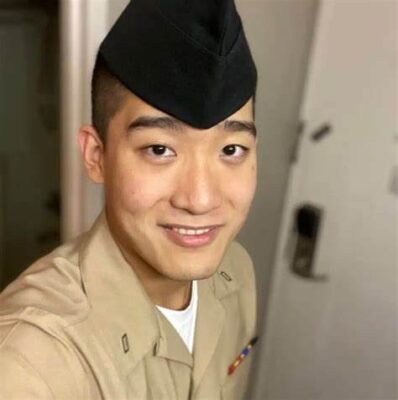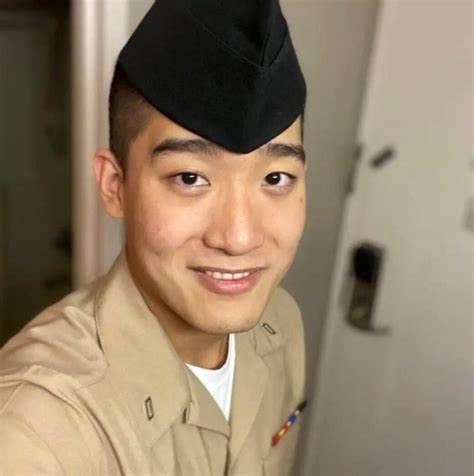US Navy Sailor arrested, charged with espionage

By SDCN Editor
San Diego, CA–A United States Navy sailor was arrested earlier this month on espionage charges as he arrived for work at Naval Base San Diego, the homeport of the Pacific Fleet.
Wei appeared in federal court pursuant to a federal grand jury indictment charging him with conspiracy to send national defense information to an intelligence officer working for the People’s Republic of China.
The indictment alleges that 22-year-old Jinchao Wei, of San Diego, also known as Patrick Wei, was an active-duty sailor on the amphibious assault ship U.S.S. Essex stationed at Naval Base San Diego. In his role as a machinist’s mate, Wei held a U.S. security clearance and had access to sensitive national defense information about the ship’s weapons, propulsion, and desalination systems. Amphibious assault ships like the Essex resemble small aircraft carriers and allow the U.S. military to project power and maintain presence by serving as the cornerstone of the U.S. Navy’s amphibious readiness and expeditionary strike capabilities.
Navy officials say the crime of espionage under the U.S. Code Section 794 has never been charged in the district, and had only been charged five times in the last six years across the entire country. The statute is reserved for the most serious circumstances involving the passage of national defense information intended to harm the United States or for the benefit of a foreign power.
“We have entrusted members of our military with tremendous responsibility and great faith,” said U.S. Attorney Randy Grossman. “Our nation’s safety and security are in their hands. When a soldier or sailor chooses cash over country, and hands over national defense information in an ultimate act of betrayal, the United States will aggressively investigate and prosecute.”
According to the indictment, in February 2022, Wei began communicating with an intelligence officer from the People’s Republic of China who requested that Wei provide information about the U.S.S. Essex and other Navy ships. Specifically, the Chinese officer tasked Wei with passing him photos, videos, and documents concerning U.S. Navy ships and their systems. The two agreed to hide their communications by deleting records of their conversations and using encrypted methods of communication.
At the request of the intelligence officer, Wei sent photographs and videos of the Essex; disclosed the locations of various Navy ships; and described defensive weapons of the Essex, between March 2022 and the present. In exchange for this information, the intelligence officer paid Wei thousands of dollars over the course of the conspiracy.
The indictment further alleges that in June of 2022, Wei sent the intelligence officer approximately 30 technical and mechanical manuals. These manuals contained export control warnings and detailed the operations of multiple systems aboard the Essex and similar ships, including power, steering, aircraft, and deck elevators, as well as damage and casualty controls. The intelligence officer confirmed with Wei that at least 10 of those manuals were useful to him. For the passage of those materials, the indictment alleges that Wei was paid $5,000.
In June 2022, the intelligence officer requested that Wei provide information about the number and training of the U.S. Marines during an upcoming international maritime warfare exercise. In response to this request, Wei sent multiple photographs of military equipment to the intelligence officer.
In August 2022, Wei sent an additional 26 technical and mechanical manuals related to the power structure and operation of the Essex and similar ships. The manuals contained warnings that this was technical data subject to export controls and that it was deemed “critical technology” by the U.S. Navy.
The indictment further alleges that in October 2022, Wei sent a technical manual to the intelligence officer describing the layout and location of certain departments, including berthing quarters and weapons systems. Specifically, Wei sent a weapons control systems manual for the Essex and similar ships. This manual contained export-controlled data that could not be exported without a license from the U.S. government. The indictment alleges that Wei knowingly violated the International Traffic in Arms Regulations by transmitting this manual to the Chinese intelligence officer without obtaining a required license.
The intelligence officer continued to request information in 2023, including information about the overhaul and upgrades to the Essex. Specifically, he requested blueprints, especially those related to modifications to the flight deck. Wei provided information related to the repairs the Essex was undergoing, as well as other mechanical problems with similar vessels.
During the alleged conspiracy, the intelligence officer instructed Wei to gather U.S. military information that was not public and admonished him not to discuss their relationship and to destroy any evidence regarding the nature of their relationship and their activities.
“Petty Officer Wei, who as a service member was trusted with our nation’s secrets, is accused of selling out his country and betraying his oath to the Navy by willingly providing sensitive military information to a Chinese intelligence officer for his own financial gain,” said Special Agent in Charge Brice Miller of the NCIS Office of Special Projects.
These arrests show the FBI’s commitment to utilizing all of its law enforcement and U.S. intelligence community resources and capabilities to aggressively combat the People’s Republic of China’s government’s threats against our military and to protect the United States’ most precious assets,” said FBI San Diego Field Office Special Agent in Charge, Stacey Moy.
The case was investigated by the FBI and the Naval Criminal Investigative Service and is being prosecuted by Assistant U.S. Attorneys John Parmley and Fred Sheppard from the U.S. Attorney’s Office for the Southern District of California and Trial Attorney Adam Barry from the National Security Division’s Counterintelligence and Export Control Section.







